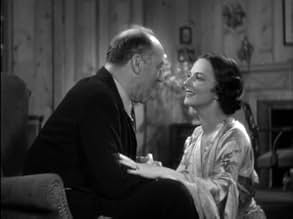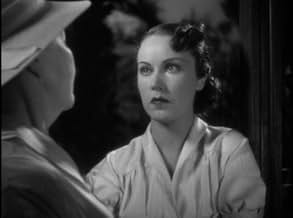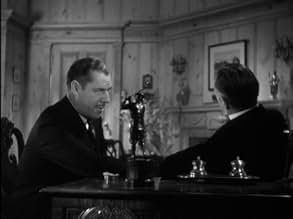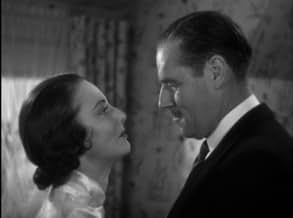Una joven escapa del sacrificio vudú de sus padres en una isla tropical. Años después, se ve obligada a regresar con su familia. Los lugareños la veneran como a una diosa vudú, volviéndola l... Leer todoUna joven escapa del sacrificio vudú de sus padres en una isla tropical. Años después, se ve obligada a regresar con su familia. Los lugareños la veneran como a una diosa vudú, volviéndola loca y provocando la muerte de la familia.Una joven escapa del sacrificio vudú de sus padres en una isla tropical. Años después, se ve obligada a regresar con su familia. Los lugareños la veneran como a una diosa vudú, volviéndola loca y provocando la muerte de la familia.
- Welfare Worker
- (sin créditos)
- Kala
- (sin créditos)
- Black House Servant
- (sin créditos)
- Langa
- (sin créditos)
- Girl Sacrificed by Mother
- (sin créditos)
- Black House Servant
- (sin créditos)
- Sacrificed Girl
- (sin créditos)
- Black House Servant
- (sin créditos)
- Psychiatrist
- (sin créditos)
- Native
- (sin créditos)
- Black House Servant
- (sin créditos)
- Dirección
- Guionistas
- Todo el elenco y el equipo
- Producción, taquilla y más en IMDbPro
Opiniones destacadas
When the wife (Dorothy Burgess), under the influence of a Voodoo curse, returns to her childhood home in the West Indies, Lane's secretary (Fay Wray) accompanies her. Lane (Jack Holt) soon follows. Here the secretary becomes a substitute mother for Stephen's child, recalling a similar relationship between Jane Eyre and Edward Rochester's ward Adele. Also, Stephen, like Edward Rochester, can finally have the woman he truly loves only when his wife dies as a result of her madness, in this case leading a native uprising.
Judging from other comments about this being a good example of pre-code horror, my expectations were high. But the director and writers never adequately explored the terror of situations. There are no build-ups of suspense. Things just happen. People are found dead after the fact. Killings and Voodoo sacrifices that happen on-screen are clumsily directed. Nevertheless, performances are uniformly good, the script is literate, and there are a few moments of cinematic art. The print I saw on Turner Classic Movies is very clean; and I was impressed by Joe August's cinematography in the scene in the tower as it filled with smoke from the burning tunnel. The interplay of light and smoke created an eerie atmosphere that I wish had been made more of.
The Good: The film has a very dark mood to it, very much like the later film, "I Walked with a Zombie". Settings and locations are similar, and there are scenes and sets that look a lot like that later film. The overall feeling of doom is here, and the climactic scene is very well done. The scenes of the voodoo ceremonies really shine in this film, and although not a true horror flick, this satisfies with some eerie shots and creepy touches.
The Bad: I am not a Jack Holt fan. In my opinion he is the weakest part of the film. Also, there were some very good shots in the film. Some odd angles with good lighting. There were times, however, when the direction seemed uninspired and timid with this strong material. Almost like two directors had a hand in it.
Overall this is a fine film that deserves a good cleanup and DVD release.
I have to admit my enthusiasm for this movie isn't shared by others in my immediate movie circle. The major flaw is that Burgess' transformation into a jungle high priestess is simply glossed over in the script. Indeed, she's off-screen for the better part of the movie. Instead the film focuses on the budding romance of Jack Holt as the harried husband and his secretary (that she's played by Fay Wray is at least a consolation). Still the film works up to an ominous mood, creating a palpable hothouse atmosphere as voodoo drums beat steadily on the soundtrack.
The film played on Turner Classic Movie many years back and is, presumably, in limited circulation. It's dated racial attitudes undoubtedly won't help it get the wider distribution it deserves. It's safe to say that a DVD release is unlikely but the film is worth tracking down.
As with so many features from this era, 'Black moon' maintains a brisk pace, filling its 68 minutes with as much story as it can. We get a great deal of exposition in just 11 minutes, including an immediate touch of atmosphere - with persistent, lingering tribal drums - as Juanita (Dorothy Burgess) illustrates her lingering obsession very early on. Those drums help to maintain the disquiet about the film as they remain a prevalent element of the soundtrack.
I think every performance is exquisite. Set design and decoration, costume design, hair, and makeup are fantastic. Lighting, especially used in conjunction with smoke effects, is marvelous. Every scene is orchestrated and executed with profound excellence, including choreography. The music is captivating, the overarching mood is wondrously harrowing, and the writing is perfectly solid: scenes, characters, overall narrative.
If I were viewing 'Black moon' strictly as a horror feature, considering only its craft and how well it manifests a feeling of horror, then I would 100% regard it as a superlative genre picture, an essential overlooked classic, and a must-see that I dearly love.
However.
There's a strong, uncomfortable, predominant undercurrent of racism, unseemly cultural prejudice, and colonialism throughout the movie, to say nothing of a stereotypical presentation of voodoo. This runs parallel to a common theme in horror, and seen often in early cinema as a whole, of sexism presenting as active disregard for women's agency and autonomy. These notions remain paramount as bodies fall and terrible events accumulate, building tension and suspense, but to an effect opposite of the feature's design: we sympathize with the characters that are painted as antagonistic.
'Black moon' occupies a very peculiar space. On the face of it the content most assuredly fits the bill as horror, and there's an outstanding, dread air of dark power that pervades the feature. At the same time, just as much if not more than the specific course of events, the intended fright - absolutely from the "protagonist" characters' perspectives, and arguably possibly from a standpoint as well of the time in which the movie was made - is in the very idea of "natives" holding power, or of a white woman willingly supporting them, let alone immersing herself in their culture. That the film's antagonists commit or conspire of concretely villainous deeds is a contrivance of storytelling that could be applied elsewhere and otherwise, and is secondary to the central thematic focus. Dialogue contextualizes vengeance against the white landowners as "sacrifice," where "justice" would be at least as appropriate a descriptor, if not more. Synopses describe Juanita's path as "corruption," but what I see is enlightenment, tempered only by the express actions as noted.
There's a LOT going on in this movie, more than a contemporary analysis would have been able to glean. Retrospect informs how very complicated and dubious 'Black moon' is in its themes and narrative: unquestionably awful specific actions, all but negated in their import as they are wrapped completely in a broader sense of apprehension and antipathy toward a) the self-determination and sovereignty of black people, b) distinct and different cultures at large, and c) anyone who would commiserate thusly, and on equal terms. I'm not inclined to think that it was the abject intent of the filmmakers, or anyone involved, to create a movie this egregiously racist. But every brushstroke, however innocent, naively led to the ultimate fruition of a very unfortunate, very abhorrent portrait.
On the one hand, I want to say this is one of the best horror movies I've ever seen. On the other hand, it deserves thorough condemnation. My mind is blown, in two very different ways.
I will grant that I may be reading too much into it all. I'm rather reminded of Roger Moore's debut as James Bond, 'Live and let die' - I really do feel like the filmmakers set out to tell a very thrilling story, and nothing more. The only problem is that they didn't seem to realize just how much of a problem it was turning out to be as they went along - seeming to demonstrate a prejudice without even knowing it was there. Here, the dialogue of the "protagonists" in particular really hammers home the othering, and even if the slant of the final product were owed to mechanical spontaneity, the consistency with which these themes are expressed is troubling.
In the end I'm glad that I watched 'Black moon,' because I really do think it's an exemplar of horror, not least of all for the 1930s. But I also have a hard time imagining who I'd recommend it to, in recognition of its deep, deep flaws. In the best way, and in the worst way, this is a curiosity, and I don't know what more to say.
¿Sabías que…?
- TriviaThe language spoken by the native characters, and by Juanita (Dorothy Burgess) when she addresses them directly, is Kreyol (also spelled Creole), the African-influenced dialect of French that is the common language of Haiti.
- Citas
Stephen Lane: Who is he? What's he like?
Gail Hamilton: He's the most wonderful man in the world.
Stephen Lane: They all say that; but, has he got a job?
Gail Hamilton: Yes. A good job.
Stephen Lane: When's the wedding?
Gail Hamilton: No wedding.
Stephen Lane: What's wrong?
Gail Hamilton: What's wrong with all the wonderful men? Just one little thing a girl keeps running into. They're married.
Stephen Lane: What are you gonna do about it?
Gail Hamilton: Well, I'm not going to live in sin. Partly because he hasn't asked me to. And partly because I'm not cut out for that sort of thing. And I doubt very much that I'll kill myself. So, I'm ducking.
- ConexionesFeatured in The Lady with the Torch (1999)
Selecciones populares
Detalles
- Tiempo de ejecución
- 1h 8min(68 min)
- Color
- Relación de aspecto
- 1.37 : 1


















